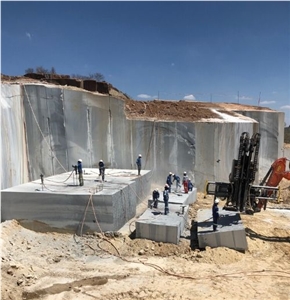Introducing Granite Quarries in South Africa Tradition: A Journey With Quarries
Introducing Granite Quarries in South Africa Tradition: A Journey With Quarries
Blog Article
Uncovering the Rich Background and Sustainable Practices of Granite Quarrying
As we stand on the precipice of revealing the elaborate tapestry of granite quarrying, a trip through time reveals not just the physical act of drawing out rock yet additionally the social and historic value woven right into the very fabric of this technique. From the ancient beginnings that laid the structure for modern-day quarrying techniques to the sustainable practices that are shaping the future of this market, each carve mark on granite surfaces narrates waiting to be discovered (granite quarries in south africa). The legacy of granite quarrying extends far past simple removal; it is a testimony to human resourcefulness, strength, and the enduring appeal of this magnificent stone
Old Origins of Granite Quarrying
Going back to old people, the practice of quarrying granite has actually been an important part of human history and architectural development. The earliest proof of granite quarrying dates back to ancient Egypt, where huge pyramids and detailed sculptures were crafted from this durable rock. The Egyptians utilized primitive devices to extract granite blocks from quarries, showcasing the relevance of this material in their huge building and constructions.
Progressing in background, the Greeks likewise made significant contributions to the quarrying of granite. The Greeks made use of granite in numerous architectural wonders, such as temples and sculptures, showing their ability in shaping and carving this hardy stone. The Romans even more improved the strategies of quarrying granite, utilizing sophisticated tools like chisels and hammers to essence and shape granite for their legendary frameworks.
Via the centuries, the technique of quarrying granite has actually progressed, with contemporary innovations enhancing effectiveness while preserving the classic allure of this natural stone - granite quarries in south africa. From old human beings to modern builders, the tradition of granite quarrying proceeds to form our globe
Evolution of Quarrying Strategies
The development of quarrying techniques has actually been noted by a constant development towards greater effectiveness and accuracy in extracting granite. Early quarrying methods entailed hands-on labor with basic tools such as chisels, hammers, and wedges to remove granite blocks from the planet.
Innovations in computer-controlled equipment and 3D modeling have actually enhanced quarrying operations, leading to marginal ecological effect and improved sustainability methods. As the demand for granite proceeds to increase, the development of quarrying techniques continues to be important to meeting sector needs effectively and sustainably.
Social Value of Granite
Granite holds an extensive cultural value throughout different civilizations as a result of its long-lasting existence in building work of arts and respected monoliths. From the majestic pyramids of Egypt to the elaborate carvings of the Angkor Wat temple in Cambodia, granite has actually been a product of choice for expressing magnificence and durability in social heritage. In old Rome, granite columns embellished holy places and public structures, representing strength and permanence. The cultural relevance of granite prolongs beyond its physical qualities; it personifies resilience, stability, and timelessness, making it an icon of sustaining heritages and traditions.

Lasting Practices in Quarrying
Amidst the rich background of granite quarrying and its cultural importance lies an expanding emphasis on lasting methods within the market. As ecological understanding and worries concerning resource exhaustion have enhanced globally, the quarrying field has progressively welcomed lasting methods to lessen its effect on the setting and bordering neighborhoods.

In addition, improvement and rehab of quarry websites post-extraction are important to lasting practices. By bring back quarried pop over to this web-site locations to an all-natural or advantageous state, such as developing wildlife habitats or leisure areas, quarriers can offset the ecological impact of their operations and add favorably to the regional environment.
Legacy of Granite Quarrying
With a historical backdrop soaked in workmanship and commercial development, what enduring influence has granite quarrying left on the landscape of contemporary culture? The tradition of granite quarrying transcends simple extraction methods; it has actually shaped architectural wonders, metropolitan landscapes, and social heritage worldwide. The sturdy nature of granite has made it a favored choice for monoliths, buildings, and framework, standing as a testament to the ability and artistry of quarry workers throughout generations.
Furthermore, the economic impact of granite quarrying can not be forgotten. The industry remains to offer job opportunity and drive regional economic situations in regions where granite removal is prevalent. It has actually also stimulated technical advancements in quarrying methods and equipment, leading to a lot more efficient and sustainable methods.
In regards to sustainability, the heritage of granite quarrying consists of efforts to reduce ecological effects through reclamation jobs and liable resource monitoring. By stabilizing financial interests with ecological stewardship, the market makes every effort to make sure that future generations can continue to profit from this enduring natural resource.
Final Thought

Report this page